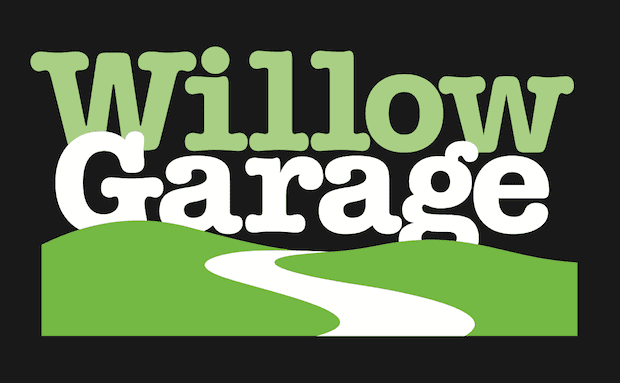Industry Robotics Founded 2006 | Website www.willowgarage.com | |
 | ||
Key people Scott Hassan (Founder)
Steve Cousins (CEO)
Eric Berger (Co-Director, Personal Robotics Program)
Keenan Wyrobek (Co-Director, Personal Robotics Program)
Brian Gerkey (Director, Open Source Development) Headquarters Menlo Park, California, United States | ||
Willow garage s pr2 robots graduate
Willow Garage was a robotics research lab and technology incubator devoted to developing hardware and open source software for personal robotics applications. The company was probably best known for its open source software suite ROS (Robot Operating System), which has been rapidly and widely becoming a common, standard tool among robotics researchers and industry, since its initial release in 2010. It was started in late 2006 by Scott Hassan, who had worked with Larry Page and Sergey Brin to develop the technology that was the predecessor to the Google search engine. Steve Cousins was the president and CEO. Willow Garage was located in Menlo Park, California.
Contents
- Willow garage s pr2 robots graduate
- Willow garage the startup that launched modern robotics in silicon valley
- History
- Open source software
- Robots
- References
Willow Garage shut down in early 2014. Most employees were retained by Suitable Technologies, Inc, while the support and services responsibilities were transferred to Clearpath Robotics.
Willow garage the startup that launched modern robotics in silicon valley
History
Willow Garage hired its first employees in January 2007, Jonathan Stark, Melonee Wise, Curt Meyers, and John Hsu. All four were recruited by Scott Hassan to work on Willow Garage's first projects which included an SUV entrant into the DARPA Grand Challenge and an autonomous solar powered boat for deploying scientific payloads in open oceans. In the Fall of 2008, Eric Berger and Keenan Wyrobek pitched Willow Garage on the PR1 project and the idea of creating a Personal Robotics Program at Willow Garage. They started the Stanford Personal Robotics Program to build prototypes for the platform technologies that would enable the personal robotics industry. At Willow Garage they continued to execute on that mission with ROS, an open source robot operating system, and the PR2 robotics development platform.
The teams from the DARPA car program and the autonomous boat program were eventually rolled into the Personal Robotics Program, which by the end of 2008, became the focus of Willow Garage.
In the Summer of 2009 Willow Garage achieved the second of their milestones, enabling PR2 to autonomously open doors, locate power outlets, and plug itself in (a video of this is available on YouTube).
In January 2010 Willow Garage achieved the third major milestone in the Personal Robotics Program releasing ROS at 1.0 and having PR2 ready for beta production.
At the end of 2010 with PR2 for sale and the ROS community on its way to 100 repositories worldwide Keenan Wyrobek and Eric Berger left Willow Garage to pursue their next venture.
Willow Garage currently has eight spin-offs:
In 2012, the company entered into a joint venture with Meka Robotics and SRI International to found Redwood Robotics, a company specializing in robotic arms.
In August 2013, Suitable Technologies Inc. retained a majority of employees from Willow Garage to increase and enhance the development of Suitable Technologies’ Beam™ remote presence system. Willow Garage will continue to support customers of its PR2 personal robotics platform and sell its remaining stock of PR2 systems.
In addition to spinoffs, former employees have created several other companies:
Open source software
Willow Garage was maintaining ROS (Robot Operating System), the OpenCV computer vision library, and PCL (Point Cloud Library). These projects all use the BSD license, an open source software license.
Robots
Willow Garage's first major robot is called PR2. It is of a size similar to a human. PR2 is designed as a common hardware and software platform for robot researchers. PR2 is a spinoff of PR1, a robotics platform being developed at Stanford University. PR stands for "personal robot".
The PR2 has two 7-DOF arms with a payload of 1.8 kilograms (4.0 lb). Sensors include a 5-megapixel camera, a tilting laser range finder, and an inertial measurement unit. The "texture projector" projects a pattern on the environment to create 3D information for capture by the cameras. Willow Garage calls this "textured light", but this approach is better known as structured light. The head-mounted laser scanner measures distance by time-of-flight. The two computers located in the base of the robot are 8-core servers, each of which has 24 Gigabytes of RAM, for a total of 48 GB. The battery system consists of 16 laptop batteries.
On May 26, 2010, Willow Garage held a graduation party in which the 11 PR2s were introduced. Some PR2s "danced" with humans while being led by their grippers. At least one party-goer attended by telepresence using the Willow Garage Texai remote presence device. Jonathan Knowles of Autodesk attended an XPrize cocktail party using a Texai to hobnob with Robin Williams.
Project Texai resulted in the Willow Garage spin-off Suitable Technologies. Project Texai become the prototype for the product announced by Suitable in September 2012, the Beam.
In June 2010, Willow Garage made two-year loans of a PR2 to 11 research teams. Each PR2 was to include two arms, a "rich sensor suite", a mobile base, 16 CPU cores, and the company's free, open-source Robot Operating System (ROS) framework, which controls the PR2 and comes with software libraries for perception, navigation, and manipulation. The teams were to have a chance not only to program a general-purpose robot but also to contribute their work on Willow Garage's open-source robotics platform to a wide community of researchers.
In August 2010, Willow Garage announced that the PR2 robot was available for purchase.
The PR2 is being programmed to do increasingly technical and dexterous applications including opening doors and folding towels.
